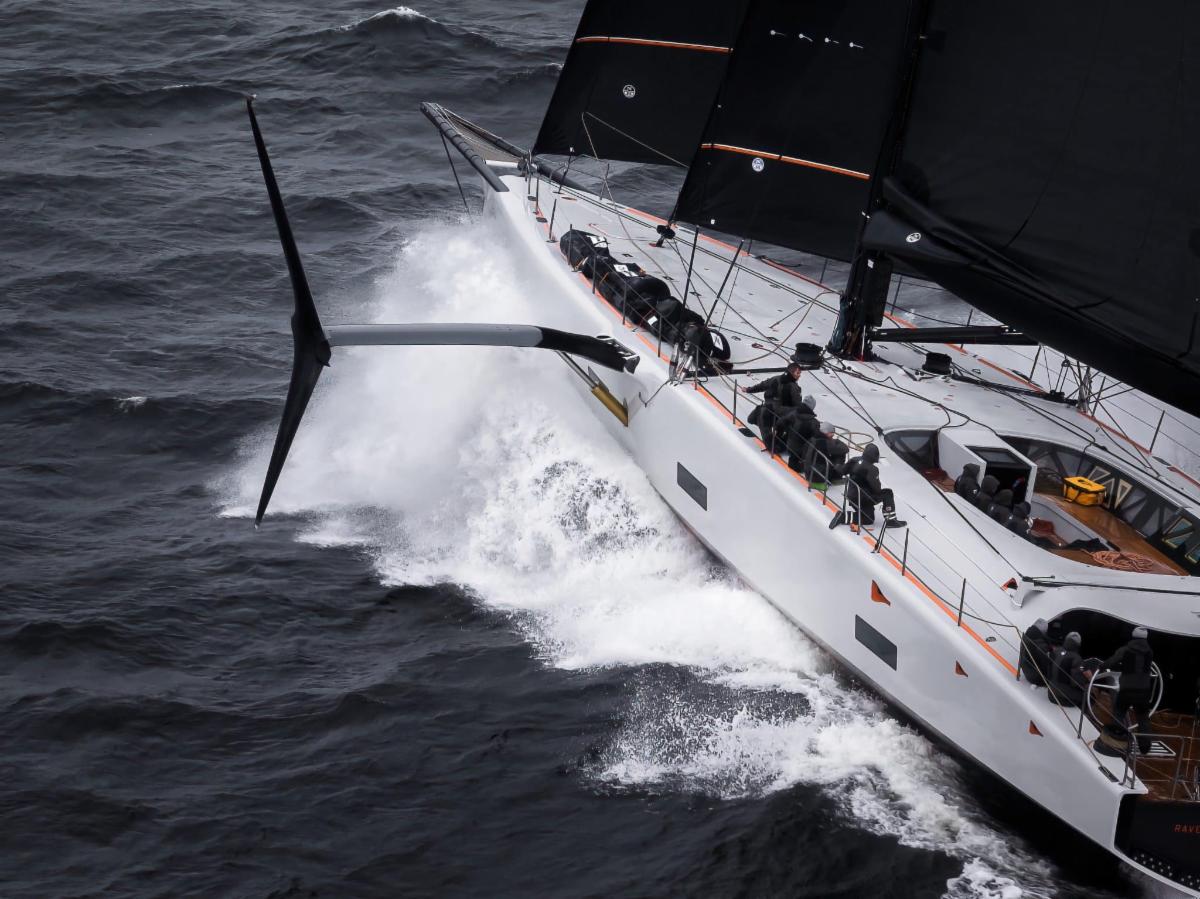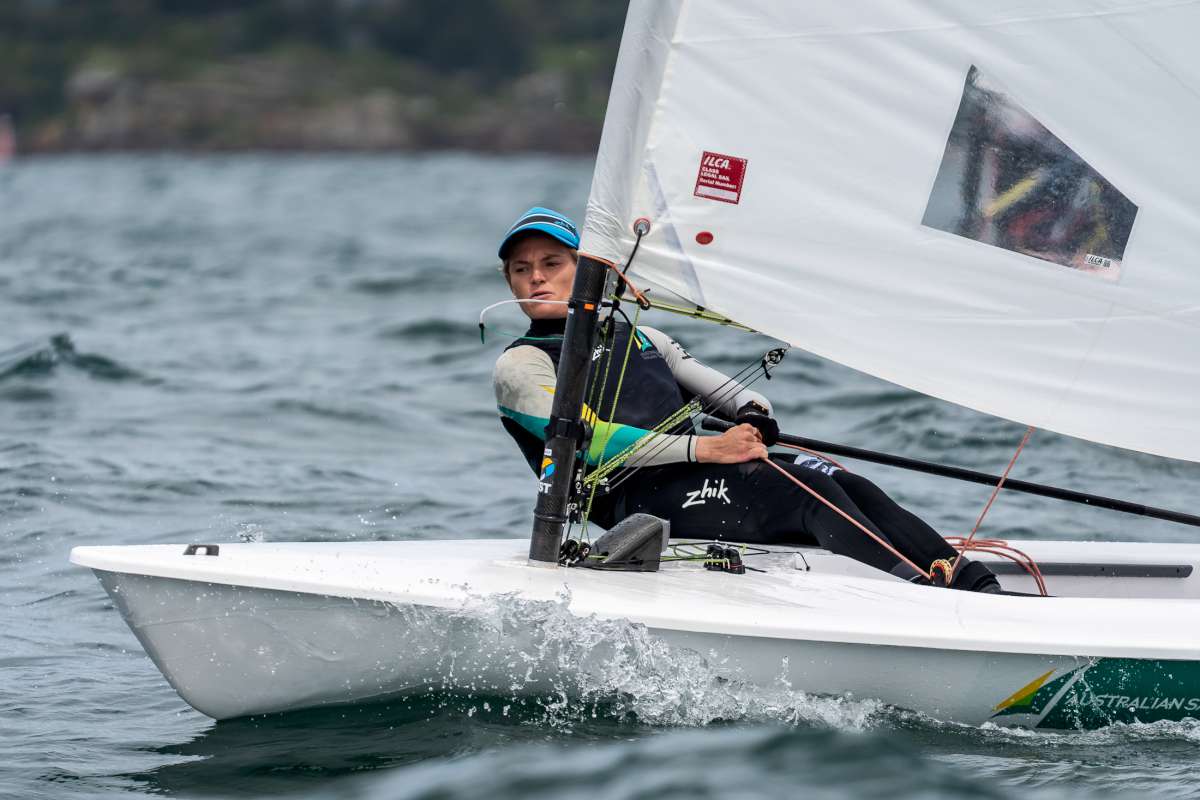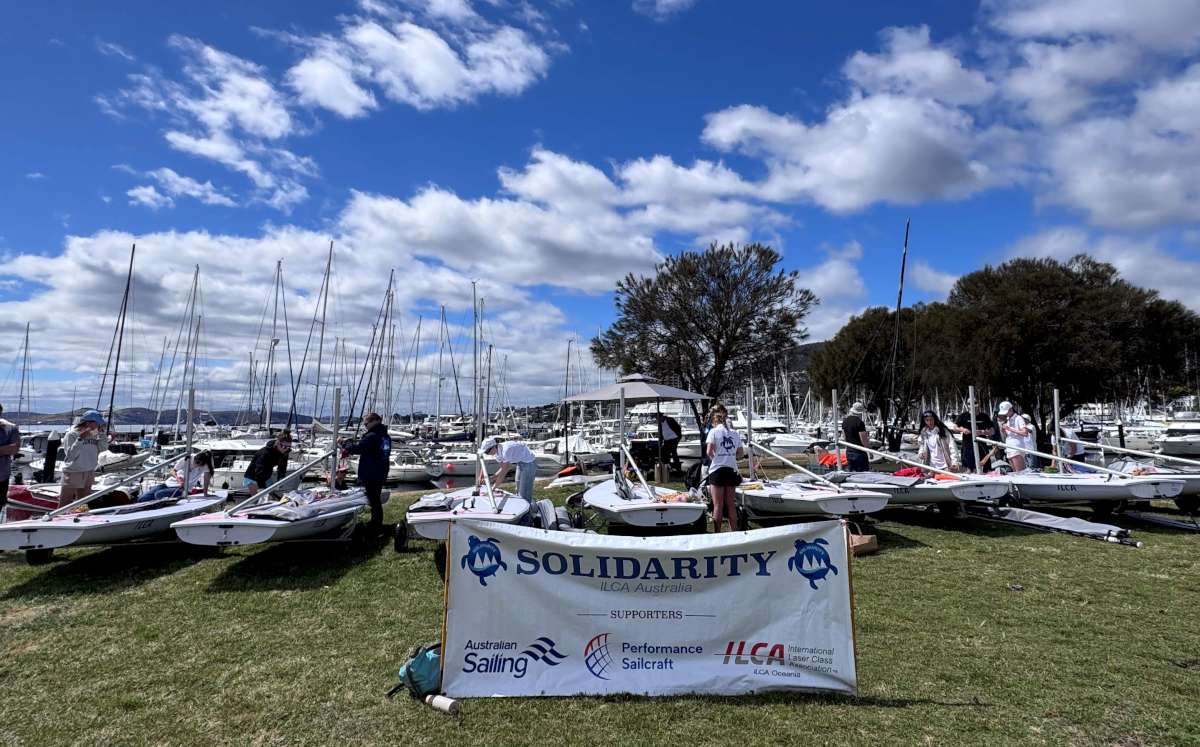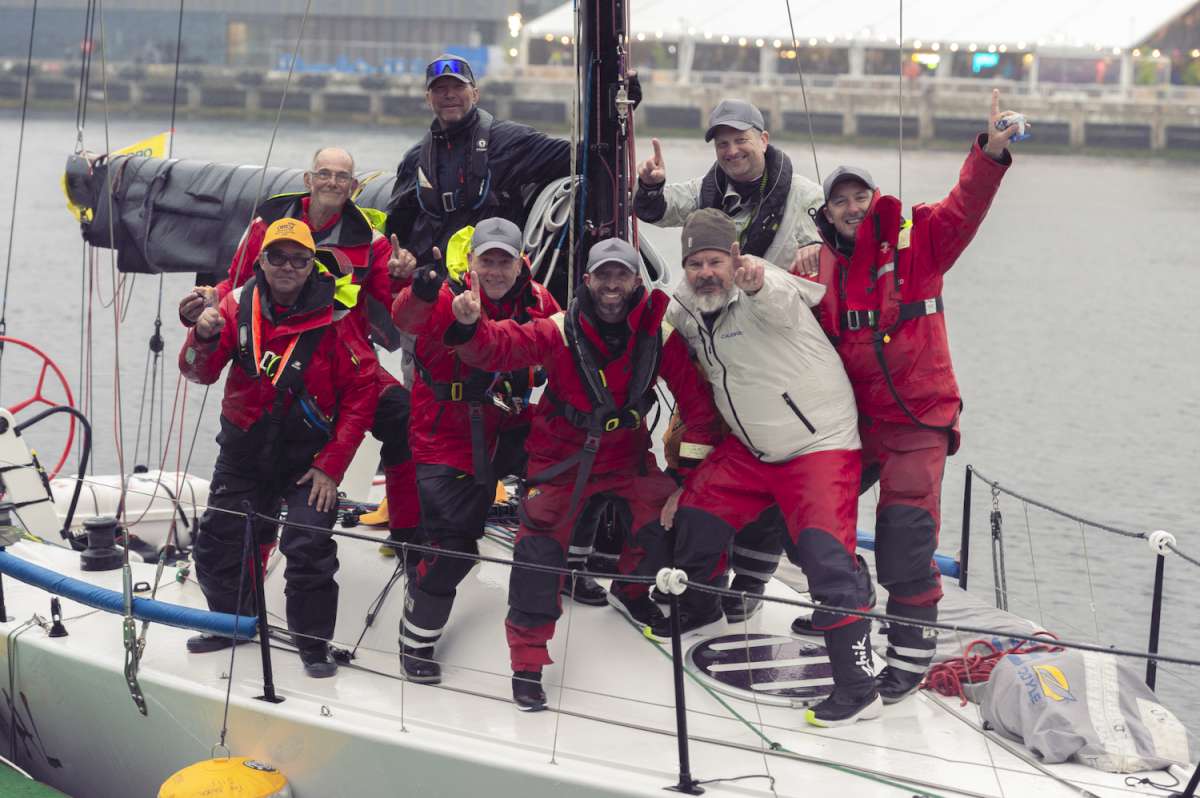For some sailors the Kingdom of Tonga is just a stop on the coconut milk run; another country to check off the list and a spot to provision in the rush across the great Pacific Ocean in one frenzied season.
But for a lot of Kiwi and Aussie boats, and the handful of others that hang around the Pacific year round, Tonga is a seasonal sailing destination. It is a place to return to time and again, even if it means bashing to windward to get there.
Whether you visit for a few days, a few weeks or a few months The Kingdom of Tonga invites you to slow down, unwind and explore. It is definitely not untouched, unsullied or undiscovered, but it is beautiful and remote and exotic. For years my partner Steve had described it as “one of his favourite stops in the South Pacific” and we both agree that it is the closest thing to paradise that we have seen so far.
Located between the Pacific islands of Niue and Fiji, Tonga, meaning ‘south’ in many pacific languages, is part of the Polynesian triangle. The Kingdom is made up of 176 small islands that are grouped into four regions: Tongatapu, the Ha’apai, Vava’U and the Niuas.
Scattered over 700,000 square kilometres of the Southern Pacific ocean, only a handful of these islands are home for the 103,000 people that call themselves Tongan. History, custom and independent spirit run deep in Tonga, you can feel it. This is a place that has never crumbled under the weight of colonisation, where a king still rules his kingdom.
TongaTapu
On our first visit we quickly learned that Tonga was a place where you can go off the charts.
Not only can you escape to your own tropical paradise but you can often find the little boat icon on your chart plotter racing across land. It is well known that the charts in Tonga are notoriously incorrect and incomplete. There are several unmarked reefs and this is not a place where things such as storm damage or even a burnt out light bulb are quickly addressed.
Heavily used passes are well marked but do not expect navigation aids to be working, or even in the right spot. Without local knowledge these waters are not the best place to travel at night, to enter anchorages at dusk or to be caught looking at your chart plotter instead of over your bow.
When we motored into Nuku’alofa Harbour the shoreline was littered with wrecks. Great hulks of rust rested like macabre tombstones along the horizon, reminding mariners to be vigilant. Navigating here is not difficult; it just demands attention.
We tied to the jagged stone wharf with our Q flag raised and waited. The check-in procedures were painless and the officials pleasant being well accustomed to ‘island time’ didn’t hurt.
Tonga is quite traditional so it is best to be properly dressed when going through the motions with Customs and Immigration. A tidy shirt and shorts is good for the men and women should dress conservatively; leave the bikinis and sarongs at the resorts and opt for an outfit
of which your mother would approve.
Showing government officials respect and paying attention to proper dress code will take you a long way here, as will a smile and a cool head. You will find no one will turn down the offer of a cup of tea and a bikkie, in fact it is somewhat expected.
We found the adjacent anchorage at Pangimotu; it had a sandy bottom in less than 15 metres of water, cause alone to celebrate in this part of the world. We arrived just ahead of a low pressure system that brought winter rain, cold temperatures and high winds but the anchorage remained comfortable and the anchor secure.
When the weather cleared we dinghied across the bay and walked into downtown. Strolling along the waterfront from the small boat marina in Nuku’alofa, or the “mainland” as many islanders further north called it, we were informed by Tourism Tonga that we had discovered “where each new day begins”.
But the more we explored the capital city the more I wondered if this was not the place where time stood still.
I was struck by the contrast between the old ways and the new world. Instant noodle packaging littered the streets as far as the eye could see. Hundreds of years of being able to drop coconut husks and palm frond food parcels and have them absorbed by the earth was a habit, it seemed, that people had yet to shake.
I heard the staccato rhythm of women beating their tapa cloth over the drone of morning traffic, the pulse of tradition and the hum of modernity fighting for my attention. It was common place to see people in the streets wearing a ta’ovala, a large hand-woven mat, wrapped about them yet, just as frequently, I saw young girls parading in stilettos and distressed skinny jeans.
Packs of pigs, ubiquitous to Tonga, roamed the streets, snuffling along in the grass and nosing about in the cool dirt. Everyone carried a cell phone, whether there was a signal or not.
I could not decide if it was a clash of the times or a confusing ballet playing out before me.
After exploring town and provisioning at the large and plentiful Municipal Fresh Market we moved, throwing the pick close to the island of Malinoa. This small dot on the chart north of Tongatapu was our first taste of what Tonga really had to offer.
The island, ringed with vibrant coral reefs, was home only to a couple of swamp hens and a colony of hermit crabs. The soft white sand pushed between our toes as we watched a humpback whale play amidst the local boat traffic in the shipping channel nearby. We were happy to stop for a few days and wait for good winds to sail on north.
Ha’apai
The 45 nautical mile passage between island groups was easy with a fair wind and we managed to find a somewhat comfortable anchorage at the southern-most island in the group, Kelefesia, while we still had good light.
We watched the sun set on the high cliffs of the island and fell asleep listening to the surf crash on the reef that almost completely surrounded us. But with building winds and the swell pushing over the reef at high tide the bay was far from ideal, our search for the perfect anchorage in the Ha’apai began.
We sailed to the sister islands of Nomuka and Nomuka Iki, set across a deep water channel from each other. Behind the reef of the smaller island we found shelter from the unseasonal north westerlies.
But the fetch that built up in the fresh 25 to 30kt winds insured a wet and sloppy ride to shore.
After three days trapped on board we decided to brave it; wet or not we needed to put our feet on solid ground if just for a half an hour. As we pulled the dinghy up the beach we passed a crowd of men awaiting a supply ship, they smiled and waved to us, the natives were friendly.
The small village was a collection of plywood and corrugated iron houses that were well kept and the dirt streets were tidy despite the dogs and snuffling pigs. As we roamed past the women’s communal weaving house their singsong laughter drifted towards us on the warm breeze. But I got the feeling they were not that used to visitors, the young girls in their school pinafores and neatly braided hair tied with red ribbons cried out “palangi” (white person) as we passed.
Unfortunately for us that season the weather was particularly unsettled. For two weeks we were left scrambling for a comfortable and safe anchorage as a pair of fronts passed through, one after another, sweeping the wind around the compass rose. The majority of the anchorages in this group give shelter from the prevailing SE winds and little, if any, protection from other directions.
Our days were spent collecting weather reports via the HF radio and occasionally local AM broadcasts, when we were able to pick up a signal. Then we tried to guess which anchorage would be suitable for the predicted conditions.
As the fronts blew through we were left feeling like Goldilocks; this cove is too small to swing in all directions and that one lets in too much swell. When the wind shifted after dark we spent nights doubting our decisions and ourselves. Unable to sleep we swapped places on the settee sitting anchor watch.
But the remote beauty of the place more than made up for the sometimes uncomfortable anchorages. During passages between islands we had fun spotting humpback whales that come to these temperate waters to calf. One morning we saw so many whales we lost count and a very friendly group came near to say hello.
Most of the islands are uninhabited so the beaches we found were vast stretches of fine sand, disturbed only by crab burrows, driftwood and a prolific assortment of shells. The coral in the shallows during dinghy trips was colourful and healthy and fish, both bottom feeders and larger pelagic, were keen to hook.
Still, after moving the boat 14 times in as many days we were almost ready to give up on the Ha’apai. Then the weather cleared and we found the island of Uoleva, a sand cay at the southern tip of Lifuka, the administrative capital for the group.
The wide crescent bay lapped up against a steep sandy beach and under the clear skies the water sparkled in various shades of blue. The bay was calm, protected by a dense tropical forest that carpeted the island and the holding was solid.
We stayed for almost a week and shared the anchorage with only one other boat for a night. We made fires and cooked on the beach, went on adventure dinghy trips to the surrounding islands and watched whales frolic nearby. After so many stressful days and sleepless nights it seemed like we had been rewarded with our own little piece of paradise.
Although we came well stocked we made a dinghy run into Lifuka and were able to buy a few fresh vegetables and a couple of bottles of cold beer. This is one of the very few islands that had power let alone shops that had anything on their shelves.
The majority of the 8000 people that live scattered throughout the Ha’apai survive on what they can grow and catch plus occasional visits by a local supply ship. Our stores were getting low; it was time to continue north to the more populated islands of Vava’U.
Vava’U
The town of Neiafu, the capital of the northern islands of Vava’U, is the hot spot for yachties.
The majority of boats make this their port of entry, the harbour being large, protected and easy to access. Sailing into the harbour we found row upon row of yachts bobbing neatly on moorings and a few more tied to the Customs dock awaiting clearance. After a month in the relative isolation of the Ha’apai we found it a little overwhelming.
Built on a steep hill the town is compact but convenient. Fresh veggies, good meats and bread made daily could be found ashore. Laundry services, internet access and the all-important cold beer were readily available.
Trolling the many waterfront bars and restaurants we found everything from tacos to pastas, curry to pizza, even a proper ‘burger with the lot’.
We found quiet drinks with spectacular sunset views, good company and cold beer by the pool, some fun and laughs with friends at quiz night and a late night dance session after taking in the Fakaleiti show (translating as ‘In the manner of a lady’, or ‘Like a lady’).
The people are friendly and the living is easy. Once here, most people have a hard time leaving this picturesque bay.
We generally like to be where everyone else is not and during the summer high season of July through to October, Neiafu Harbour is often awash. After a couple of nights spent socialising on shore we slipped the mooring lines and pointed the bow back down the channel.
Just beyond the harbour buoys is some of the finest sailing in the Pacific.
The tall volcanic islands shield the inner waterways from the deep ocean swell while moderate SE trade winds blow almost year round.
Moorings/Sunsail has set up shop here and issue a chart with more than forty anchorages marked on it. Within a few hours we were safely anchored in one of our favourite spots in the South Pacific; a pristine bay with good holding overlooking a small white sand island.
The majority of the area is deep water with only an occasional unmarked reef or narrow passage to be wary of, making sailing between the islands fairly easy and lots of fun.
However the charts are still inaccurate and we saw firsthand the results of someone navigating unfamiliar waters at night; it is one thing to see an old cargo ship rusting on shore and quite another to watch someone’s dreams getting bashed against a reef at sunrise.
Our usual routine was to spend a couple of weeks island hopping before returning to Neiafu for the three crutches of modern life: food, beer and email. Every couple of days we picked a new anchorage, our choice dependant on our mood, the crowds and the weather. Since these islands are tall and anchorages plentiful there are many choices when the wind kicks up and places to hide when the migrating boats start passing through.
Several of the outer island villages welcome visitors, some even hosting traditional Tongan feast nights and handicraft displays. A few of the villages have gotten grants and installed moorings, not only making it easier for yachties to visit but protecting the coral beds that surround their island homes. Money collected goes to efforts to improve the community, school fees for the children and maintenance on the moorings. It is an honour system, usually requiring crew to go ashore and seek out the person in charge to pay.
During our visits we have seen great improvements in local docks, village pathways and school buildings.
There is lots to see and do throughout the islands; underwater caves to explore, vibrant coral gardens to snorkel, local schools that encourage visitors, a floating art gallery to browse and the occasional outer island restaurant to have dinner or an afternoon cocktail at.
Humpback calving season also brings whales to Vava’U so we enjoyed more whale watching while sailing around through the islands.
A great resource while we were in the area was VHF channel 26. Several years ago the Vava’U Sport Fishing Club installed a series of repeater towers so they could monitor boats fishing further offshore. Today this system is used by fisherman and yachtsmen alike. Local business owners volunteer their time year round to host a morning VHF net, the main focus being weather reports and emergency traffic. It works.
While there we heard a yacht being rescued from running aground, plus many other emergencies easily dealt with.
One of the things we really enjoyed while in Vava’U was participating in the weekly Friendly Yacht Race held by the Port of Refuge Yacht Club. On Friday nights boats congregate in Neiafu harbour for a not-so-serious race around the cans. We have seen Volvo Ocean racers, traditional Polynesian Drua, kids in Optimist dinghies, local boats and cruising boats of all makes and designs out together for an evening of fun. Afterwards, at a shore-side restaurant, prizes donated by local businesses were awarded and everyone had the chance to boast or commiserate over lots of cold beers.
In today’s high tech world of Google Earth and navigation apps it is close to impossible to get off the beaten track. However, after exploring the many islands in Tonga we know there is a perfect anchorage for everyone. Whether you like safety in numbers or swinging on the hook in a secluded bay alone, you can find it here.
No matter where you are in the Kingdom of Tonga, what can be better than blowing the froth off a cold one while watching a perfect Pacific sunset slip below the horizon.
Heather Francis


























